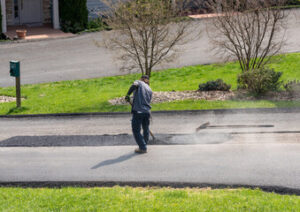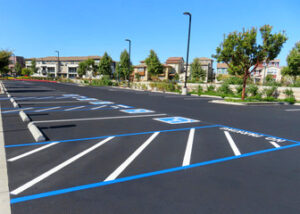Home » 2024
Yearly Archives: 2024
Things You Should Know About Boat Lift Installation
Boat lifts are a great way to make the process of getting your boat in and out of the water a lot easier. However, like any other structure, boat lifts can encounter problems if they are installed improperly or hastily.

Fortunately, there are some things you can do to prevent these issues. For professional help, contact Your Marine Contractor.
A boat lift is a great way to save time and money while getting your boat in and out of the water. It also helps protect your boat from unnecessary wear and tear and makes it easier to use. However, if not installed properly, it can cause safety issues for anyone who uses it. If you’re planning to install a boat lift for the first time, there are a few things you should know to keep yourself and others safe.
One of the most important safety issues is ensuring that your boat lift is rated to handle the weight of your vessel and any equipment you plan on taking with you to the water. If you don’t take this into account, you could risk damaging the lift system or the hull of your boat.
Another safety issue is ensuring that your boat lift is positioned correctly before operating it. It’s important that your boat is centered front to back and side to side to ensure equal weight distribution. Otherwise, it could damage the lift or cause the boat to float off. If you’re unsure of how to position your boat, consider using accessories such as bow stops or motor stops to help maintain balance.
It’s also a good idea to regularly check your boat lift for any problems that may develop. This can include things like worn cables, loose strands, or broken pulleys. By doing so, you can catch these issues before they become a problem and prevent them from damaging your boat or causing injury to yourself or others.
It’s also a good idea to perform routine maintenance on your boat lift during the off-season. This can include checking the cables and lubricating moving parts. This will help prevent wear and tear and keep your lift in good working condition for years to come.
Read the Instructions
Whether you’re a professional or just learning how to install a boat lift, the process can be hectic. You can do damage to your lift and boat if you don’t follow all the instructions. If you’re unsure of what to do, contact your local HydroHoist dealer and ask for help.
The first step to installing your boat lift is to read the manufacturer’s instructions. These will guide you on how to put your lift together and how it works once it’s in place. You’ll need to learn what type of maintenance the lift requires and how to properly operate it. You’ll also want to ensure that you have the right tools for the job.
If you’re installing a standing lift, pay attention to the water depth and bottom quality in your area. Adjustments can be difficult to make afterward, and it’s important to know what your local conditions are before you purchase and install a lift.
You’ll also need to consider the size of your boat when choosing a lift. Model, fuel weight, extra equipment, and other variables will affect what size of a lift you need to safely accommodate it. You’ll need to know the beam of your boat (the widest part) as well as the length and keel for accurate measurements.
Once you’ve finished assembling your lift, you can use it to launch and park your boat. Remember to always operate your lift carefully and slowly. If you’re not careful, you could accidentally cause the lift rack and frame to jam together or cause damage to your cables. It’s also important to never raise your boat too high. A good rule of thumb is to lift it about a foot above the water’s surface. This prevents your vessel from hitting or scraping the lift, and it keeps you safe by preventing falls from the boat.
Prepare the Area
A boat lift is a great way to save time while getting your boat in and out of the water. It also helps protect your boat from unnecessary wear and tear while in the water. However, these benefits are only achieved when your lift is correctly installed. A professional boat lift installer is vital to ensure your lift functions safely and properly. They will be able to inspect your boat, the area you plan to install the lift in, and local regulations or homeowner policies regarding boat lifts to determine which lift is best for your location.
Before you start the installation process, make sure you have a large, flat work space and enough tools to complete the job. It’s important to use protective gear such as gloves, goggles, and sturdy footwear to minimize your risk of injury. It’s also important to read the manufacturer’s instructions and familiarize yourself with all of the parts that come with your lift. This will help you understand how the lift works, and will make it easier for you to follow installation steps.
When choosing a lift, consider the size and weight of your boat as well as the water depth in your area. The water depth will affect the weight that can be supported by the lift, and it may require you to select a different type of lift or modify your current one. Additionally, if you have a seawall or dock on your property, you will want to choose a lift that is compatible with that structure.
It’s also important to check and double-check your measurements before putting your lift in the water. It’s difficult to make adjustments once the lift is in the water, so it’s best to get everything right the first time around.
When a hurricane is approaching, it’s best to remove your boat from the lift and store it somewhere safe. Leaving your boat on the lift during a hurricane increases the chance that storm surge will reach higher than the lift and cause it to be swept away or break apart. If you don’t have the option to remove your lift, you can still prepare it for a hurricane by securing long lines high on the pilings (we recommend using clove hitches finished with two half hitches) to minimize chafing.
Choose the Right Lift
The type of lift you choose will depend on factors such as your boat’s size, water depth and dock configuration. Some lift types work better in certain conditions than others. For example, if you have a location where the water level rises and falls rapidly, you might want to consider a floating lift instead of one that’s fixed to the dock.
Another factor to consider is how much the lift can hold. Every lift has a recommended weight capacity and it’s important to adhere to this limit. Exceeding this amount can cause damage to the lift and it may break. To avoid this, make sure the lift you purchase can handle your boat and all the equipment you’ll be bringing on board.
To determine the right lift for your needs, start by looking at the manufacturer specifications and dry weight of your vessel. Then add the weight of everything you’ll be carrying on board, including required coast guard equipment, food and beverages and extra items in the livewells. It’s also a good idea to include a margin of error, as some manufacturers list the dry weight without accounting for items like an extra gas tank or full battery.
When choosing a lift, look for a model that features adjustable bunks to accommodate your boat’s hull shape. This will ensure that your boat has optimal support and that the lift will not contact the water when it’s lowered or raised. Some lifts even come with a safety switch to prevent over-raising the boat which can damage the engine, drive and other parts.
For salt water locations, choose a lift that’s made of stainless steel. This material is more durable and resists corrosion. Choosing a stainless-steel lift can help extend the life of your vessel and protect it from damage caused by rough weather, such as wind, waves and rain. Additionally, stainless-steel parts are easier on the pulleys and cables of your lift. As a result, they require less maintenance and have a longer lifespan. This can save you money in the long run and will increase the value of your property when you sell it.
Masonry Contractors
Masonry Contractors Nassau County work is hard. It requires muscle power that you didn’t even know you had. It also demands precision and style.
Experienced masons provide a wide range of services to homeowners. They can install or repair brick steps, patios, and fireplaces, among other outdoor features. They also help with interior remodeling.

A skilled mason can make a huge difference in the appearance and functionality of your home. They can help you select the best materials, set a realistic budget, and assist you with the overall design of your project. They can also help you with small repairs and maintenance to prevent costly and inconvenient problems.
Masonry is a very labor-intensive job. It is important to find a masonry contractor with a good reputation. Asking references or reviewing online reviews can help you make the right choice. In addition, you should ask the mason to provide a quote before starting the work. The quote should include all fees, costs, and an estimated completion timeline.
During your interaction with potential contractors, you should also inquire about their work history and the type of projects they’ve completed. It is also important to ask if they have experience working with the materials you’ve selected for your project. If not, it’s worth pursuing other contractors.
You should also ask about the contractor’s estimated timeline for completing your project and what happens if there are any delays. This will give you an idea of the level of commitment that they have to your project.
Another thing to consider is the contractor’s payment options. You should find out whether they accept cash, credit, or checks. You should also be aware of any additional charges for different types of payments. Finally, you should check the company’s work contract to see what their refund policy is.
A mason is a professional who provides concrete services to residential and commercial properties. They have the skills and expertise to build patios, walkways, and driveways. They can also create decorative walls, retaining walls, and fireplaces. They can also repair existing brick or stone structures. Before hiring a mason, you should check their credentials to ensure that they are licensed and insured. Choosing the right mason can save you time and money in the long run. It is also crucial to find a reputable mason who will deliver quality work and complete the project on time.
When choosing a masonry contractor, it is important to ask several questions. This can help you make an informed decision and protect your investment. It is also important to find out if the company has any insurance, especially worker’s compensation. In addition, it is a good idea to get quotes from several companies before making your final selection. This will help you compare prices and quality of work.
Masonry is a skilled trade that requires special tools and training. Its scope of practice includes construction with brick, stone, concrete block, glass block and terra-cotta block, as well as repair of various structures, including walls, partitions, chimneys and arches. Typically, only contractors who provide these services require licenses, and state requirements vary.
Before hiring a mason, check his or her background and references. Moreover, look for customer reviews and pictures of previous projects. A picture is worth a thousand words, and it should give you a better idea of the mason’s ability to do the job. You should also ask if the mason has any insurance, such as worker’s compensation and general liability.
It is also important to find out if a masonry contractor company has a valid business license and permits. A valid license will ensure that the company is a legitimate business and will not pose a risk to you or your property. Additionally, it will show that the company has met a certain level of professionalism.
The Mason Contractors Association of America (MCAA) should certify a reputable mason company. While this certification isn’t required, it is a sign that the company meets high standards and has experience in the industry. In addition, it shows that the company is committed to providing customers with high-quality service.
Finally, it is a good idea to hire a masonry company that provides a warranty on their work. This will give you peace of mind that the job is done right and will last for years to come. It will also save you time and money in the long run. Additionally, it is a good idea to choose a company that cleans up after each project. This will ensure that your home is not left in a mess after the mason leaves.
Masonry is an expansive and vital segment of the construction industry. Masonry contractors are responsible for the solid structures and finishing touches in our offices, stadiums, homes, schools, churches, shopping plazas, parking structures, and stairs and walkways. They also build and repair chimneys, patios, and retaining walls. Masons work with a wide range of materials including stone, brick and concrete.
The best masonry companies are well-established, financially stable, and have a strong presence in the industry. They have a deep commitment to their teams, and they invest in their employees’ development. They also have a clear picture of their finances and can handle challenges that arise quickly. Masonry is a tough business, and the top contractors know how to thrive in the challenging times.
They use high-quality materials and adhere to strict quality standards. They are also experts in their fields, so they can work faster and more efficiently than a DIYer. Additionally, they know how to navigate the complex regulatory requirements of the industry.
Masons are skilled artisans that can create unique shapes and designs. They can create arches, vaults, and columns with a variety of finishes and textures. They are also experts in building walls using rebar and precast concrete block and brick. They can also install insulated concrete wall units and glass block. In addition, they can install concrete stairways and sidewalks.
Unlike wood, masonry is impervious to extreme weather conditions and offers protection against termites, fungus, mold, and rot. It also helps homeowners save on energy bills because it stores heat in winter and cools in summer. Moreover, it is more durable than other building materials and adds to the resale value of houses.
Masonry is a beautiful and timeless material that can be used in a variety of applications. It is resistant to the elements and can last for a lifetime with little maintenance. It is also fire-resistant, so it can help prevent a home from being destroyed by a fire. It also provides a comfortable environment for people to live in, and it is an excellent choice for homeowners who want to build a house with a fireplace or firepit.
Masonry is typically more expensive than other construction materials, but it can provide many benefits. Its durability and beauty can add to the resale value of your home, while its low maintenance costs make it a smart choice for commercial properties. Using a qualified masonry contractor can save you time and money, and they have the right tools for the job.
A mason is trained in the trade through years of apprenticeship and on-the-job training, so they will be able to perform the work correctly the first time around. This will help you avoid costly repairs later on, which can save you money in the long run. A mason can also offer suggestions on how to lower your overall project costs. For example, new installation techniques may reduce labor costs or allow you to use different materials.
The masonry industry consists of special trade contractors who build foundations and structures from brick, stone, concrete, and other masonry materials. They often work with general contractors on larger projects. They can build walls, chimneys, patios, and fireplaces. They can also lay tile and bricks. They may also specialize in historic renovations and restoration.
There are several factors that influence the price of masonry work, including the type of material used and the complexity of the project. The location of the project can also affect prices. In addition, labor and material costs can vary depending on the season.
When choosing a masonry contractor, be sure to get a quote for the entire project and understand how it will be priced. This can include costs for local material/equipment delivery and service provider transportation to and from the job site.
You should also consider any additional charges such as labor upcharges related to master/premium craftsmanship, expedited scheduling and the like. Some masonry companies require a deposit up front, while others have a payment schedule that depends on the percentage of work completed.
When you hire a mason, ask about his or her experience and references. You should also ask for a copy of his or her license and insurance. Then, read the contract carefully to ensure that you have understood the terms and conditions. You should also discuss the costs for clean up and who is responsible for buying supplies. The contract should also specify a timeline for completion and payment terms.
The Benefits of a Privacy Fence
Privacy Fence Summerville SC is a physical barrier that visually isolates, conceals, or secludes objects or people. They often protect children and pets while keeping unwanted intruders out.

Unlike chain-link fences, they’re typically tall and solid, so they block views and sounds. They also help keep your backyard private so you can enjoy spending time with family and friends.
Privacy is an important aspect of a person’s life, encompassing personal autonomy, the protection of self-esteem, and the freedom to make choices. This right to privacy is reflected in a wide range of social, legal, and cultural norms. However, the nature of this right is complex and often contested. The importance of privacy is also shaped by psychological, sociological, and economic factors.
The definition of privacy varies, depending on the individual. In general, it involves the desire to keep one’s private information secret and unknown to others. This privacy is a human right that is protected under international law. It is the right to be free from intrusion by public officials and private individuals. In addition, the right to privacy includes a person’s right to personal control over their actions, thoughts, and communications. Privacy is different from secrecy, which refers to keeping a matter secret to those who are not directly involved. A person’s right to privacy is often defended by arguments based on social, ethical, and legal principles.
Those who value their privacy may choose to take steps to protect it, such as keeping a journal or password-protecting their computer. Nevertheless, it is possible that even these measures will be breached. In the digital world, personal data is easily shared with many parties. This data can be used for a variety of purposes, including tracking and targeting ads.
The loss of privacy can have serious implications for a person’s life. Medical records, credit reports, court records, social media accounts, shopping habits, and the locations of people visited on the Internet all contain sensitive information that could be used against a person. These details are often available to government intelligence agencies, e-commerce companies, and other organizations.
Throughout history, groups of people have been persecuted due to their race, religion, or political beliefs. They have been targeted by governments, powerful business entities, and criminals. Privacy has been one of the shields that have protected them from unjust victimization. Moreover, privacy can help people achieve personal goals and promote social stability. This is why it’s so important for all people to understand and respect the importance of privacy.
Security
Privacy fences can shield you from prying eyes and unwanted intruders, helping you to feel more secure on your own property. They can also help to establish clear property lines, preventing disputes with neighbors over yard encroachments or misunderstandings that could lead to legal problems.
When selecting a fence, it is important to consider your individual needs and aesthetic preferences. Fences come in a variety of styles, so it is possible to find a type that will fit your needs and complement your home. However, it is important to be aware that some types of fencing may make a yard feel closed-off and claustrophobic.
One of the biggest benefits of a privacy fence is that it creates a barrier that blocks sound, making your yard a quieter and more peaceful place to spend time. It can also serve as a wind barrier, protecting your outdoor furniture and landscaping from damage.
Another benefit of a privacy fence is that it is harder to climb than other types of fencing, which can add an extra layer of security for your family. This is because a privacy fence typically has fewer gaps that a person can use to spy on you or reach through, and they are often made from sturdy materials that are difficult to scale.
In addition to this, many privacy fences have additional features that make them more difficult to climb, such as spiky or pointed tops and anti-climbing designs. This makes them a good choice for homeowners who want to protect their family and pets while also enjoying their outdoor spaces.
When choosing a privacy fence, it is important to consider the cost of installation as well as site prep. These costs can include grading the ground, installing footings and posts and putting in any drainage systems needed. A professional fence pro will be able to give you an estimate for the cost of these services, as well as any other installation or removal costs that might be applicable. It is also important to note that the higher the height of the fence, the more expensive it will be.
Durability
Many homeowners choose to install a privacy fence to protect their family and pets from unwanted visitors. While the presence of a fence does not prevent all trespassing or burglary, it does deter most people from coming onto your property. It also makes it much more difficult for them to see what you have in your yard, reducing the chances that they will want to steal items from you.
A privacy fence can also help you to enjoy your backyard space more by shielding it from the elements. The barrier prevents wind and snow from causing damage to your garden, flowers and landscaping. It can even help to keep your outdoor space warm during the winter months.
The privacy fence can also act as a sound barrier, keeping the noise of barking dogs and noisy neighbors from bothering you in your own yard. This can be especially helpful if you have young children, who often complain about being kept awake by their neighbors’ activities. In addition, the privacy fence can block out other sounds that are more annoying, such as leaf blowers, cars driving by and shouting kids.
Most home insurance policies require that a secure fence be installed around any pool in order to reduce the risk of accidents and drownings. It can also make it more difficult for small children to accidentally wander into the street or other dangerous areas. This is why a fence is an important investment for any home owner.
There are several different styles of privacy fencing to choose from, depending on your needs and aesthetic preferences. A board on board fence, which is made of alternating boards placed horizontally and vertically, is a popular option. This fence can be constructed of wood, vinyl or aluminum. It is durable and looks great with just about any style of house. It is less expensive than other options but still provides a good level of security.
Another type of privacy fence is a shadowbox or board on rail fence. This fence is similar to a board on board fence but has gaps in between the boards. This type of fence is not as secure as a full privacy fence because it is easy to spy on things going on inside your backyard.
Appearance
A privacy fence blocks your backyard from the view of neighbors and passersby so you can relax in peace. It also protects your garden, flowers and lawn from high winds by obstructing the wind. The design and materials of the fence can add to the curb appeal of your home. Wood fences look elegant and can be further customized with custom features like steel posts, shadow box fences and lattice tops. Masonry fences made with mortared stacking stones look stunning and can be incorporated into your landscaping to create a unified look for your property. They can also serve as a retaining wall to contain soil on sloped yards. Other options include metal and vinyl fences.
A well-placed and built privacy fence is a must if you want to spend time outdoors without feeling as though everyone in the neighborhood is peeking in on your private outdoor dinners or watching your children play.


